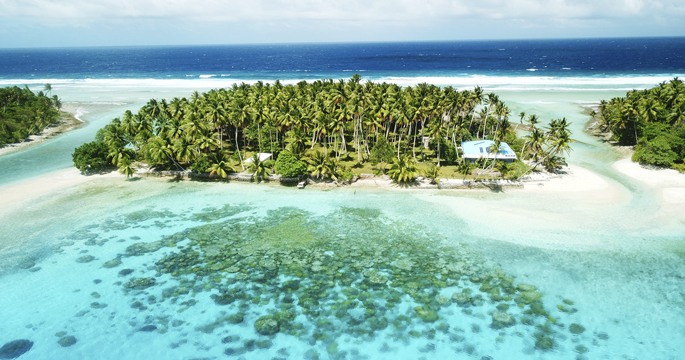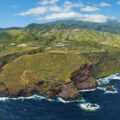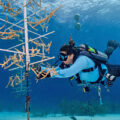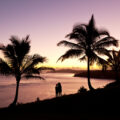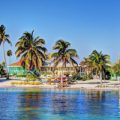These South Pacific gems are far away from the crowds and quite possibly you’ve never even heard of them
Have you ever wanted to get away from it all – as in REALLY get away? If so, we have some islands for you. These small specs of land are among the least-visited places on earth, and they are spread across a vast swath of the south-central Pacific Ocean, ten times the size of the United States.
These aren’t the sort of places you’ll jet away to for a long weekend. Just getting there could take days and several connecting flights. And forget luxury hotels; you’ll be staying in modest guest houses and eating like a local. On the plus side, you won’t be rubbing elbows with holiday crowds, and you might even be the only tourist on the streets. If this sounds good to you, here are five islands you’ve probably never heard of where you can truly get away from it all.
Marshall Islands
At its pre-Covid peak, the Marshall Islands welcomed just under 7,000 tourists a year, ranking 200 in the world for international arrivals. Given this relative trickle of visitors, it’s not surprising that there are less than 200 hotel rooms in the entire island group. Honestly, there’s not much to see on the main island of Majuro, which is crowded and not particularly scenic. It’s more of a stopping-off point after flying in from Guam or Honolulu before taking a boat or commuter flight to an outer island.
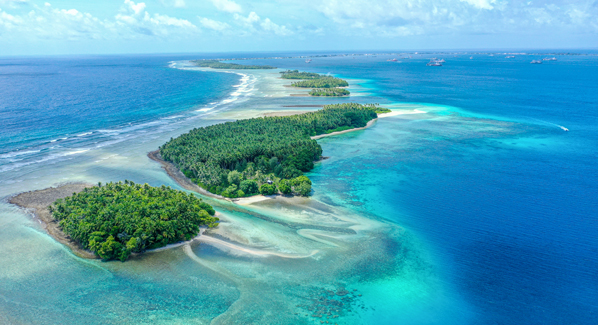
An aerial view shows a scattering of gorgeous and undeveloped atolls of the Marshall Islands in the Pacific Ocean. Photo: Romaine W/Shutterstock
Tourism in the Marshalls is very much a niche thing. Surfers on safari make pilgrimages to remote reef breaks, and adventurous big game fishermen charter vintage vessels to ply blue waters in search of trophy gamefish. The group most familiar with the Marshalls are divers. The inner lagoon at Bikini was the site of a 1946 atomic bomb test that sent a sacrificial fleet of warships to the seabed. Today, diving into the historic wrecks of Bikini’s atomic fleet is considered a bucket-list adventure.
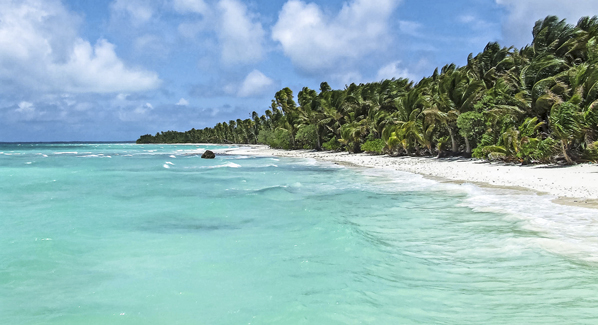
Deserted beaches and coastline of Arno Atoll, one of 133 coral islands in the Marshall Island chain. Photo: andrearenata/iStock
Kiribati
First off, it’s pronounced kiri-bas. Combined, the land mass of these 32 islands is about the size of New York City — but they are spread across more than two million square miles of ocean. So, you won’t be island hopping. About 1,000 visitors a month make their way to Kiribati on twice-weekly flights from Fiji or Brisbane. Government officials, aid workers, and business folk are usually bound for the capital on South Tawara Island. This island gained some degree of notoriety in the travelogue book “Sex Lives of Cannibals,” which details the realities of living on a remote island.
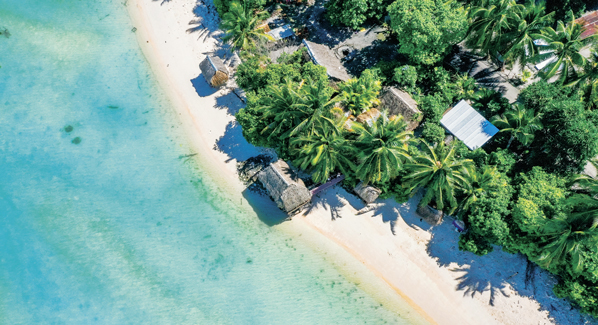
Aerial view of Kiribati beach and coastline, an island nation in Micronesia in the central Pacific Ocean. Photo: RomaineW/Shutterstock
The few tourists who make the trip to Kiribati are likelier to end up on Kiritimati, aka Christmas Island, which sports a modest eco-tourism trade. Back in the day, the US and Great Britain used Kiritimati as a testing ground for nuclear and hydrogen bombs. Fortunately, there’s no radiation danger these days. Now, saltwater fly fishing, birdwatching, scuba diving, and surfing are the main attractions. Don’t expect palm-fringed sands, as the island is a low-lying coral plateau with a huge central lagoon formed by a dense network of natural swimming pools. The island’s modest tourism infrastructure includes a trio of fishing lodges and a couple of small guest houses.
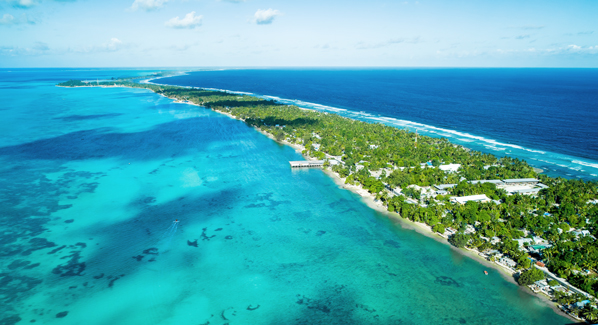
Kiritimati, often referred to as Christmas Island, was discovered by Captain James Cook on Christmas Eve in 1777. Photo: Kyung Muk Lim/Shutterstock
Nauru
Nauru is the third-smallest nation on earth, with only the Principality of Monaco and Vatican City having less land area. It also leads most lists as the least-visited place on earth, with fewer than 1,000 tourists making the journey each year. Yet despite this seeming trickle of visitor traffic, there are surprisingly good air connections that include weekly flights to Brisbane, Kiribati, the Marshall Islands, and Fiji. Commerce is the reason for this connectivity.
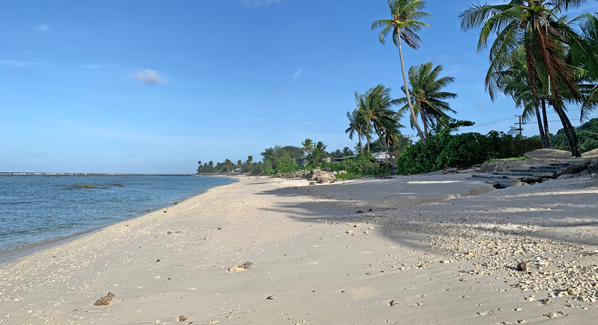
The oval-shaped island of Nauru is surrounded by a coral reef with a narrow coastal belt, and settlements are located there. Photo: Rafayil Abbasov/Shutterstock
Nauru was once a very wealthy nation, thanks to mining operations that exported millions of tons of valuable phosphate ores. By the late 20th century, some 80 percent of the island’s interior was strip-mined into a lunar landscape of jagged limestone. The Australian government is now involved in reclaiming these areas, and visiting the Nauru Rehabilitation Corporation Nursery gives visitors a glimpse of the future as greenery begins to retake the island. Mining operations aside, there are reasons to visit Nauru, as the coastline still offers plenty of coral reefs, palms, and beaches.
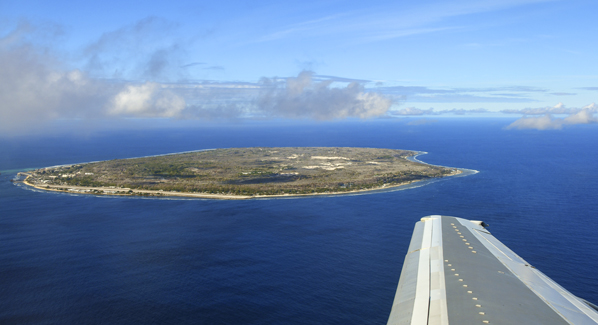
As seen above, the entire country of Nauru shows the barren plateau of jagged limestone pinnacles left after phosphate mining. Photo: M. Torres/iStock
Niue
On average, 9,000 people visit Niue each year. If more people knew about this idyllic outpost, there’d undoubtedly be more visitors. As it is, the only flights arrive from New Zealand, so you’ll need to get to Aukland before catching the three-hour twice-weekly flight onward. Niue is part of the Realm of New Zealand and shares similar cultural traditions that blend English influences with Maori Polynesian roots. The low-key tourism sector includes a dozen small hotels, guest houses, and a respectable collection of local restaurants.
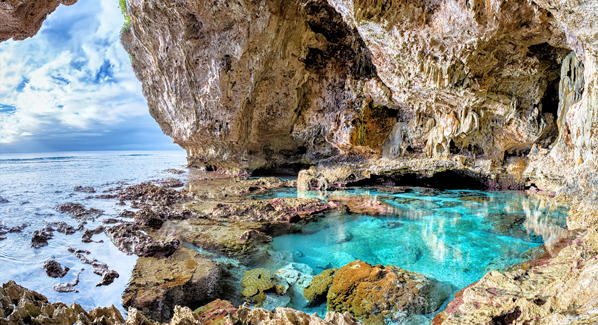
Swimming holes on Niue take the place of beaches on this coral atoll where Avaiki Cave is nestled within the rugged limestone cliffs. Photo: Molly Brown NZ/Shutterstock
The island is an elevated coral atoll with limestone shores. Sorry, there are no beaches. Instead, you get a delightful collection of sheltered coastal pools, natural arches, and semi- submerged grottos that are a swimmer’s and snorkeler’s paradise. Just offshore, clear waters wash over pristine reefs to the delight of scuba divers. Niue is one of the best places in the world for whale watching. From July to October, humpback whales migrate past the island’s shores. Ashore, the island rewards hikers with trails that pass through lush rainforests and lead to limestone caves and elevated ocean bluffs.
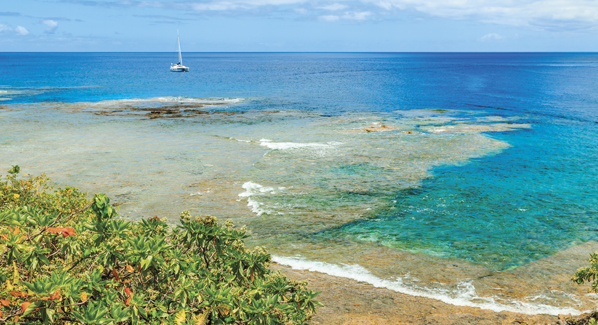
Alofi is the capital of the island nation Niue, which is surrounded by a coral reef with only one break to enter. Photo: Izabela23/Shutterstock
Tuvalu
If you make it to Tuvalu, you are a rare breed of tourist. This tiny nation is made up of nine coral atolls, which are basically narrow strips of land, sandbars, and pocket-sized islands surrounding an inner lagoon. The largest atoll in the group, Funafuti, is the only spec of land large enough to shoehorn in a jetliner-sized landing strip. Weekly flights from Fiji bring about 300 visitors a month, and Tuvalu sometimes makes the list as “the least visited place on earth.”
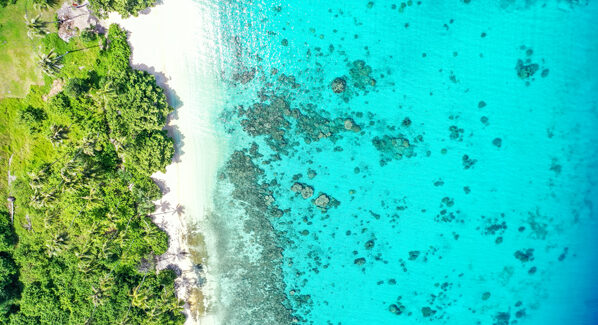
Pristine beaches and coastline are shown in this aerial view of the island nation of Tuvalu, which is composed of three reef islands and six atolls. Photo: Romaine W/Shutterstock
Once you do make it to Tuvalu, what’s next? There are plenty of palm trees, miles of deserted beaches to wander, and lagoons filled with shimmering turquoise waters. It’s a beach lover’s and scuba diver’s paradise without the people. A rental motorbike will get you around the more populated parts of Funafuti, but the only way to reach more distant reaches of the atoll is by boat. A mid-sized hotel near the airport is favored by business travelers, but for a true away-from-it-all experience, there are a handful of guest lodges scattered around the lagoon on picture-perfect small islands.
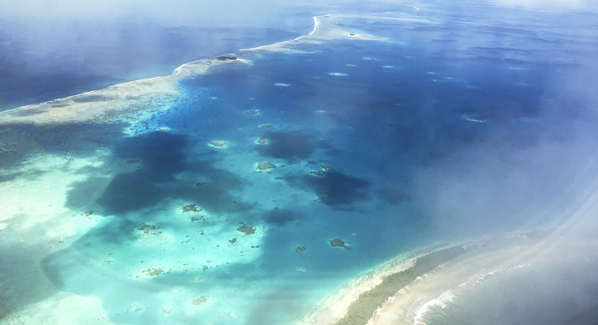
Heading in for a landing on the island of Tuvalu in Funafuti, the plane’s view shows off the turquoise water and coral atoll that surround the country. Photo: Maximilien Leblanc/iStock

